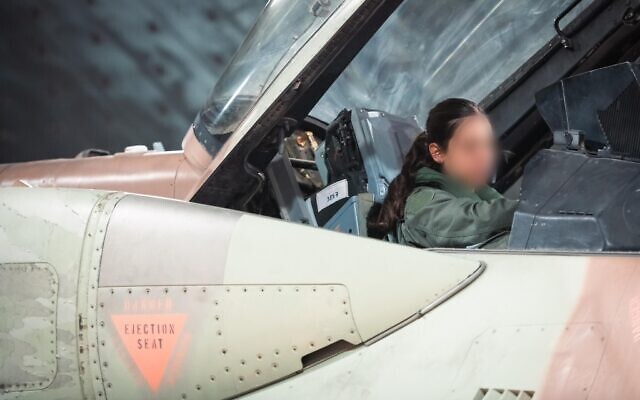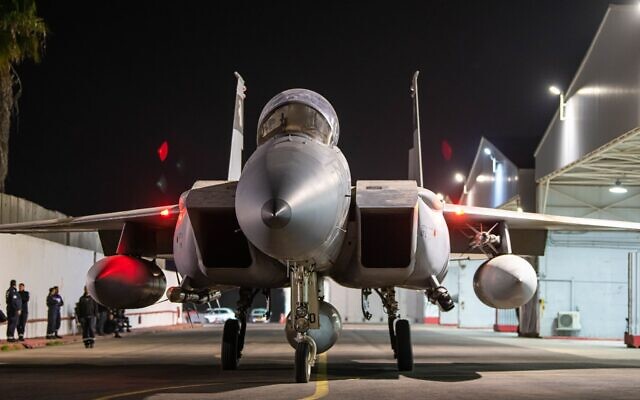It was late at night in Iran when 180 ballistic missiles left their launchpads, briefly entered outer space, and finally descended toward their targets which covered every square inch of Israel. The attempted carpet-bombing, which took place on October 1, was was the largest ballistic missile attack in human history. Israeli, U.S. and other allied systems intercepted most, but not all, of the missiles. Israel launched its long awaited response this past Saturday: revealing both astonishing capabilities, and also a terrifying weakness. Here’s what you need to know.

Photo: An Israeli Air Force Navigator returning from operations over Iran. Credit: IDF
At approximately 2:00 AM on Saturday morning, an estimated 140 Israeli aircraft flew toward Iranian air space and for three hours struck military targets in multiple waves. This feat should have been impossible for the tiny Jewish state: it required flying almost 1,000 miles, much of it through hostile airspace (including Iraq and Syria), multiple in-air refuelings, and massive intelligence coordination. Including the aerial refueling tankers, the search and rescue teams, and the fighter jets themselves, this one operation required an estimated 30% to 50% of the Israeli air force. A number of navigators were women, a significant statement given the Iranian regime’s severe limitations on women in its society. By 6:00 AM all hands had returned home safely.
Code named מבצע ימי תשובה, the operation is often translated poetically as “Operation Days of Repentance” but can also be translated more simply (and equally accurately) as “Days of Answer.” By the Hebrew calendar, Israel’s “answer” to Iran commenced exactly a year and a day after the Iranian backed massacre of October 7.
Even now, new information is still coming out about the targets, but here’s what we know so far: Israel’s first wave took out air defense systems in Iran, Iraq and Syria, including the Russian made S300. These systems cannot be easily replaced, especially with Russia currently dedicating its resources to fighting in Ukraine, which leaves Iran vulnerable to future potential Israeli operations. The second and third Israeli waves destroyed missile launchers and the factories that built them, presumably diminishing Iran’s ability to launch future attacks. Aside from missile infrastructure, one notable target was a secret Iranian military base in Parchin, which is closely linked to Iran’s nuclear research program; another was the air defenses that protect much of Iran’s oil production. As far as we know, there were no direct attacks on oil production itself, on nuclear facilities, or on Iranian leadership. Based on the latest data, civilian casualties came to a grand total of zero.

Photo credit: IDF
The message to Iran is clear: Israel can strike inside Iran: anywhere and at any time. Distance is not a barrier, air defenses are practically irrelevant, and Israel’s intelligence information, enabling pinpoint strikes on important Iranian resources, is impressive.
Yet Israel also telegraphed another message: that despite its significant military capabilities, the IDF does not enjoy the political freedom to actually use them. Operation “Days of Answer” is the result of weeks of negotiations with the Biden/Harris administration, during which America applied enormous pressure on Israel to spare Iran’s leaders, its nuclear program and its oil production. The result is that Iran has not paid a price for its multiple missile attacks on Israel, other than the destruction of some those very missiles. That’s like saying that the penalty for murder is that the judge will confiscate your gun: it effectively communicates the message, “you have nothing to lose, so you might as well try again.”
Indeed, this is exactly what Iran has done: having attacked Israel with a massive barrage in April followed by another in October, an attempt on the life of the Israeli Prime Minister just last week, as well as over a year of attacks by its proxy forces, including the October 7 massacre itself.
While America is understandably obsessed with “stability,” its policy makers seem confused on how one achieves it. A case in point: Israeli forces killed Hamas leader and the mastermind of October 7, Yahia Sinwar in Gaza on October 16. Since that time, the number of rockets Hamas has successfully fired at Israel has come to a grand total of: zero (down from approximately 6,000 per month at its peak last year). This is not because Hamas does not wish to avenge its leader, but because it is no longer capable of doing so. THIS is what “regional stability” looks like, and it is the kind of stability we could achieve throughout the Middle East, if major Western powers did not invest quite so much energy into protecting their own enemies. For now, Western appeasement gives Iran a significant advantage and saddles Israel with a terrifying weakness: no matter what capabilities Israel may have, it is not able to actually use them.
Nonetheless, Israel’s operations in Lebanon and Gaza demonstrate another truth: not only does Israel sometimes ignore American pressure, but when Israel is successful, America will sometimes (retroactively) support, and even try to share credit, for Israeli operations. A case in point: in the past month, Israel has killed more terrorists on America’s “Most Wanted” lists than America has in the last 20 years, including Hezbollah leader Hassan Nasrallah, who helped to kill 220 US Marines in their Barracks in 1983. Indeed, when Israel successfully took out Nasrallah, despite strong U.S. pressure for an immediate ceasefire, the White House responded that “justice” had been done; after Israel killed Hamas leader Sinwar in Rafah, Vice President Kamala Harris, who had fiercely advocated against Israeli operations in Rafah, bizarrely stated “we” will always bring terrorists to justice.
Iranian leaders have communicated through various sources conflicting messages: that they will, and also that they will not, mount a “response” to Israel’s strike this week. This week Israel has demonstrated that it has the military capacity to wreak significant destruction on the Iranian military machine, its leadership, and the oil infrastructure that funds both. As we wait to see how events unfold, one thing seems clear: the future direction of the Middle East lies, to a great extent, in Israel’s hands.


